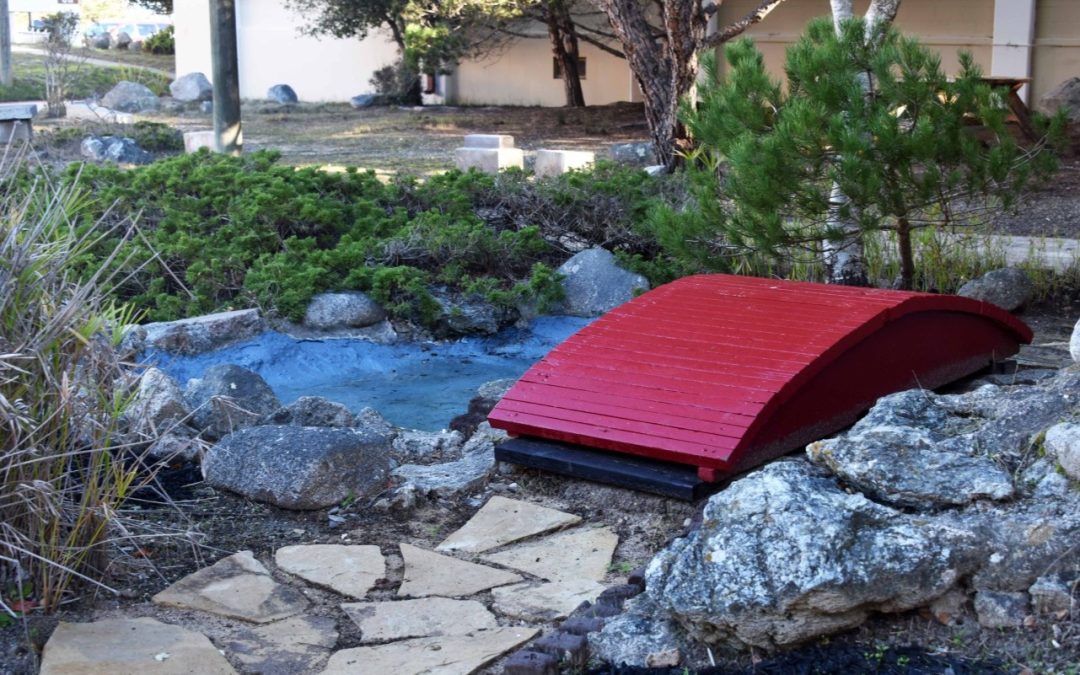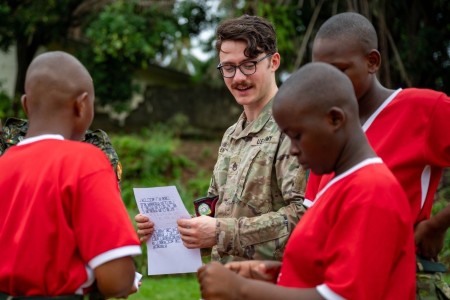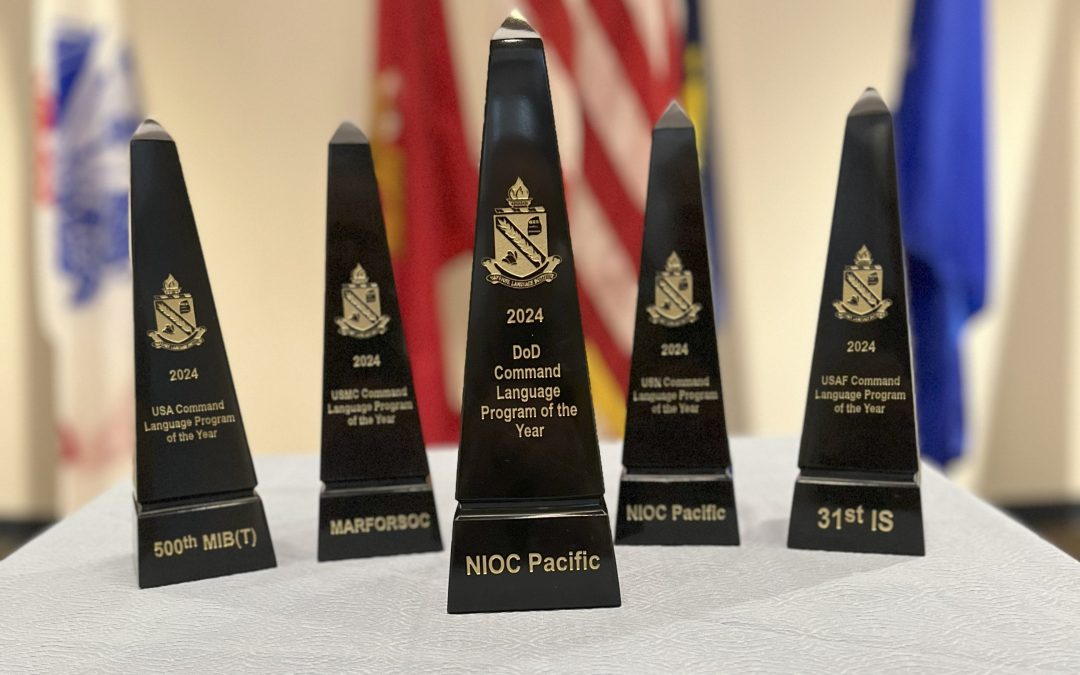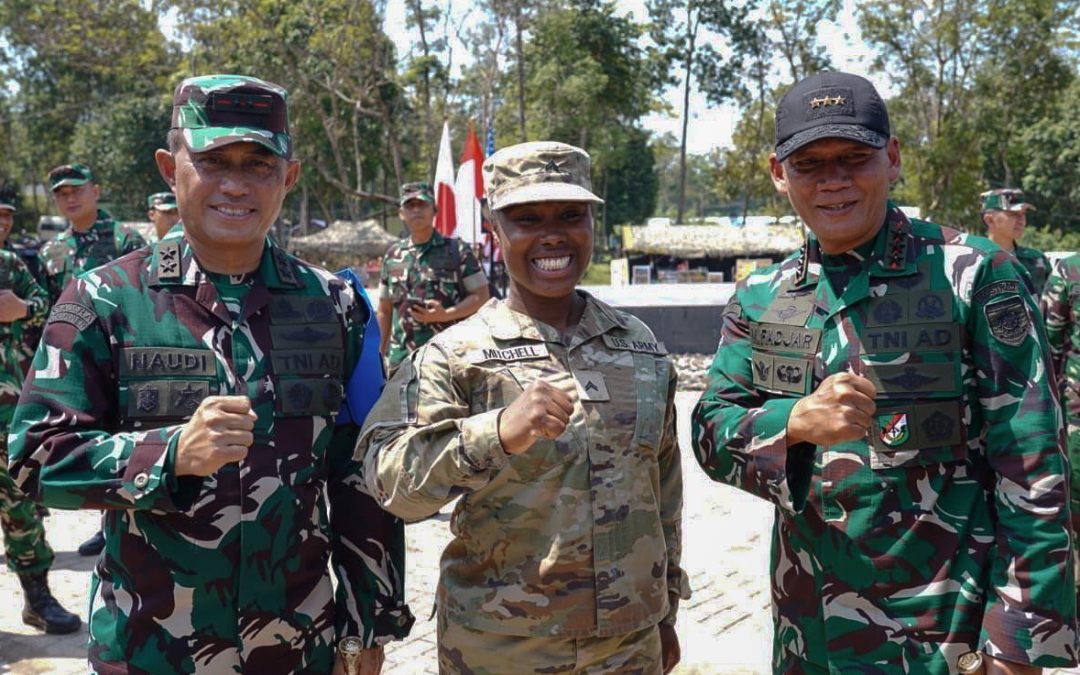From the Military Intelligence Service Language School Album 1946
Edited by Patrick Bray
DLIFLC Public Affairs
Summary: This article consists of excerpts from the MISLS Album 1946, which covers the period from 1942 to 1946 when the language school relocated to Camp Savage, Minnesota, in 1942 and later Fort Snelling, Minnesota, in 1944. Highlights include the introduction of a collegiate system, expansion of the curriculum to include Chinese and Korean in 1945, and even more training of linguists in Japanese for the period of American occupation of Japan after World War II. In June of 1946 the school moved from Fort Snelling to Monterey, California, and was renamed the U.S. Army Language School.
Battle experience proved that intelligence corps men were essential, and the War Department fully acknowledged the importance and the need of a Military Intelligence School. It was then that the War Department decided to place the intelligence school under its direct jurisdiction. The first official MISLS class began in June 1942 with 200 men.
The initial Savage class represented little change from the curriculum at the Presidio of San Francisco School. It was not until the second class got under way in December 1942 that the school began to take on its special characteristics as a center of instruction in military Japanese. It has been found that to expect students to obtain a grasp of both military and general-usage language was to demand too much of them, and with the second Savage class, the stress was laid on the military side.
The third class opened in the summer of 1943, after the entire school system had been reorganized into three divisions: upper, middle and lower, according to the student’s abilities.
The fourth and last Savage class, began in January 1944 and brought the School to peak size: 52 academic sections as of July 1944, with 27 civilian and 65 enlisted instructors. With this class the Upper-Middle-Lower divisions scheme was replaced by the so-called “collegiate” (for their semblance to the separate college within a university) division identified alphabetically, with no distinction among them as to student abilities. At the same time, the academic term was lengthened from six to nine months.
Naturally, this balloon-like expansion of the school required increased facilities. A gradual program of construction, which had added barracks and classrooms to the original plan was sharply accelerated.
 By the fall of 1944, the MISLS was an established service school which had turned out some 1,600 enlisted graduates, 142 officer candidates, and 53 officers, who had had courses in reading, writing, and speaking Japanese; translation, interpretation, and interrogation; captured document analysis; heigo (Japanese military and technical terms); Japanese geography and map reading; radio monitoring; social, political, economic, and cultural background of Japan; sosho (cursive writing); and order of Battle of the Japanese army.
By the fall of 1944, the MISLS was an established service school which had turned out some 1,600 enlisted graduates, 142 officer candidates, and 53 officers, who had had courses in reading, writing, and speaking Japanese; translation, interpretation, and interrogation; captured document analysis; heigo (Japanese military and technical terms); Japanese geography and map reading; radio monitoring; social, political, economic, and cultural background of Japan; sosho (cursive writing); and order of Battle of the Japanese army.
Despite the enlargement and improvement of Camp Savage, facilities were inadequate and overtaxed. A large part of the camp supply and administrative functions were handled through Fort Snelling. Logic and expediency clearly pointed to a move to this permanent Army installation, at that time standing only partially occupied and offering by virtue of its location and facilities many more conveniences than Camp Savage could hope to match.
The School found a new home in historic Fort Snelling, situated at the junction of the Mississippi and the Minnesota Rivers. Now the larger facilities at Fort Snelling would alleviate to some extent the restrictions of Savage.
The first graduation at Fort Snelling and the ninth of the School was held in November 1944 with 382 Americans of Japanese ancestry and 11 Americans of Chinese ancestry receiving their diplomas.
The Chinese Division was organized in February of 1945 and placed under the Training School for administrative purposes. This division was distinguished from the classes of Americans of Chinese ancestry in the regular divisions. The latter were trained in the Japanese language while the Chinese Division received training in Chinese.
After the defeat of the German forces in Europe, all the might of the U. S. Armed Forces was turned on the Japanese enemy in the Pacific. Acceleration of operations in the Pacific meant a need for more and more linguists. At the MISLS, the only source of these linguists, every effort had to be made to prepare the men and get them out as fast as it was humanly possible.
 The terms of all sections were shortened considerably, in some cases from six to eight weeks. Not only was every daylight hour dedicated to instruction and evenings to supervised study; but Saturday morning hours ordinarily utilized for examinations were also scheduled for instruction. Instructors were placed on duty every evening, not merely to supervise study, but also to tutor the students. This was actually a return to the former six-month course for the nine-month sections.
The terms of all sections were shortened considerably, in some cases from six to eight weeks. Not only was every daylight hour dedicated to instruction and evenings to supervised study; but Saturday morning hours ordinarily utilized for examinations were also scheduled for instruction. Instructors were placed on duty every evening, not merely to supervise study, but also to tutor the students. This was actually a return to the former six-month course for the nine-month sections.
Subsequent to V-J Day, there was a shift in emphasis from the Military Japanese to general Japanese, and in particular, to Civil Affairs Japanese. The unconditional surrender of Japan did not in the least lessen the demand for Japanese language trained personnel. On the contrary, quantitatively and qualitatively, the demand became more insistent. Replacements for earlier graduates who were eligible for discharge became imperative. Civil affairs language work called for language men of higher caliber than that demanded by combat intelligence.
New courses like Civil Affairs terms and Japanese Government and Administration were added. New teaching materials were prepared to take care of the shift from military to civil Japanese. The job of winning the war had been finished but the job of winning the peace had yet to be accomplished.
In October 1945, a Korean language class was initiated with Lt. Calvin Kim in charge. The class started with seven enlisted men and one officer. Their major program was study of the Korean language. During the course of study, additional students were found and graduation in March 1946 found 13 men receiving diplomas.
In October 1945, MISLS had reached its peak enrollment of 1,836 students in 103 sections.
The closing chapter of Fort Snelling was highlighted with the graduation of 307 students at the 21st commencement in the school’s history, and the 11th at Fort Snelling in June 1946. The MISLS had by then graduated some 6,000 men.
The indispensability of the linguists cannot be summarized in a few paragraphs. It can well be said that without the participation of these men, the U.S. forces would have battled against greater odds. Information and knowledge of the enemy obtained by these men cannot be measured in words but by the weight of victory itself.





